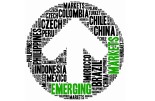MUFG: Examining the impact of geopolitical tensions on EM credit spreads
MUFG: Examining the impact of geopolitical tensions on EM credit spreads

The escalating geopolitical risk following the onset of the Israel-Gaza crisis has led to wider credit spreads across the Middle East. While the situation is remains fluid, benchmarking historical episodes of heightened geopolitical risk signals that the spread reaction largely tends to be contained, reflecting relatively strong credit fundamentals, consistent with the recent price action.
For GCC credit, investment grade (IG) spreads have usually widened by ~10bp on heightened regional risk, whereas GCC high-yield (HY) credit spreads have widened by ~25bp. The recent underperformance of Egypt is different from the past, although that may reflect a number of domestic idiosyncratic factors, such as the recent Moody’s downgrade of Egypt credit, amid the country’s high external vulnerability.
More broadly, in our base case scenario that the conflict will remain contained, higher-for-longer fatigue in US rates is set to bring relief to EMs on aggregate. Granted, whilst the still tight spreads versus US rates make the value proposition in outright EM receivers challenging, if US rates are topping out and stabilising, we view this could be an opportune moment to re-engage in EM on a selective basis.
FX views
Emerging market currencies have faced cross currents over the past week resulting in mixed performance. There has been a relatively muted impact so far on EM FX performance from the flare up in geopolitical risks in the Middle East. EM FX volatility has picked up but it is still close to the lows since the COVID shock started in early 2020.
At the same time, the flare up of geopolitical risk helped to initially to trigger a correction lower for US yields and the USD although we are not convinced it will be sustained. The 10-year US Treasury yields has dropped back after hitting a peak of 4.89% just after the last NFP report was released. The pullback for US yields appears to have initially been driven by safe haven flows just after the conflict between Hamas and Israel started.
Trading views
It seems to us most of the reading out there on EM is on the bearish side. Cyclical data in the US has been better than expected while geopolitical risk has increased significantly. Yet in the face of this price action is holding up much better than the narratives suggest. Most risk assets are not too far from levels than they were before the good NFP while certain EM FX pairs like ZAR and MXN have surprisingly strengthen. Thus we would focus on this rather than hypothesising on the huge unknowns that could eventuate from the Israel conflict.
Week in review
September inflation accelerated in Egypt and Russia, while price pressures eased in Czech, Romania and Hungary. Meanwhile, exit polls suggest opposition win in Poland which indicates a policy U-turn and the market is pricing in ~25-50bp of rate cuts from the Bank of Israel when it meets on 23 October.
Week ahead
In a relatively quiet week, September inflation data will be released in Nigeria and South Africa.
Forecasts at a glance
In a world of tightening global financial conditions and questions about the liquidity implications of the now-finalised US debt ceiling, we see a degree of macro risks for EM economies in H2 2023, with external funding requirements the central concern.
We expect EM growth to trough this year but remain below potential in the 2024 recovery. The silver lining is that subdued growth should cap inflation, facilitating monetary policy easing where external balances allow.
Core indicators
According to the IIF data, EM securities suffered an outflow of USD13.8bn in September 2023 – second consecutive month of overall outflows across the EM complex. Recent market turmoil around the future path of monetary policy, along the increasing sovereign yields have made a dent on the performance of non-resident outflows across the EM complex. Chinese equities have continued to suffer an outflow, totalling around USD4.4bn in September.










